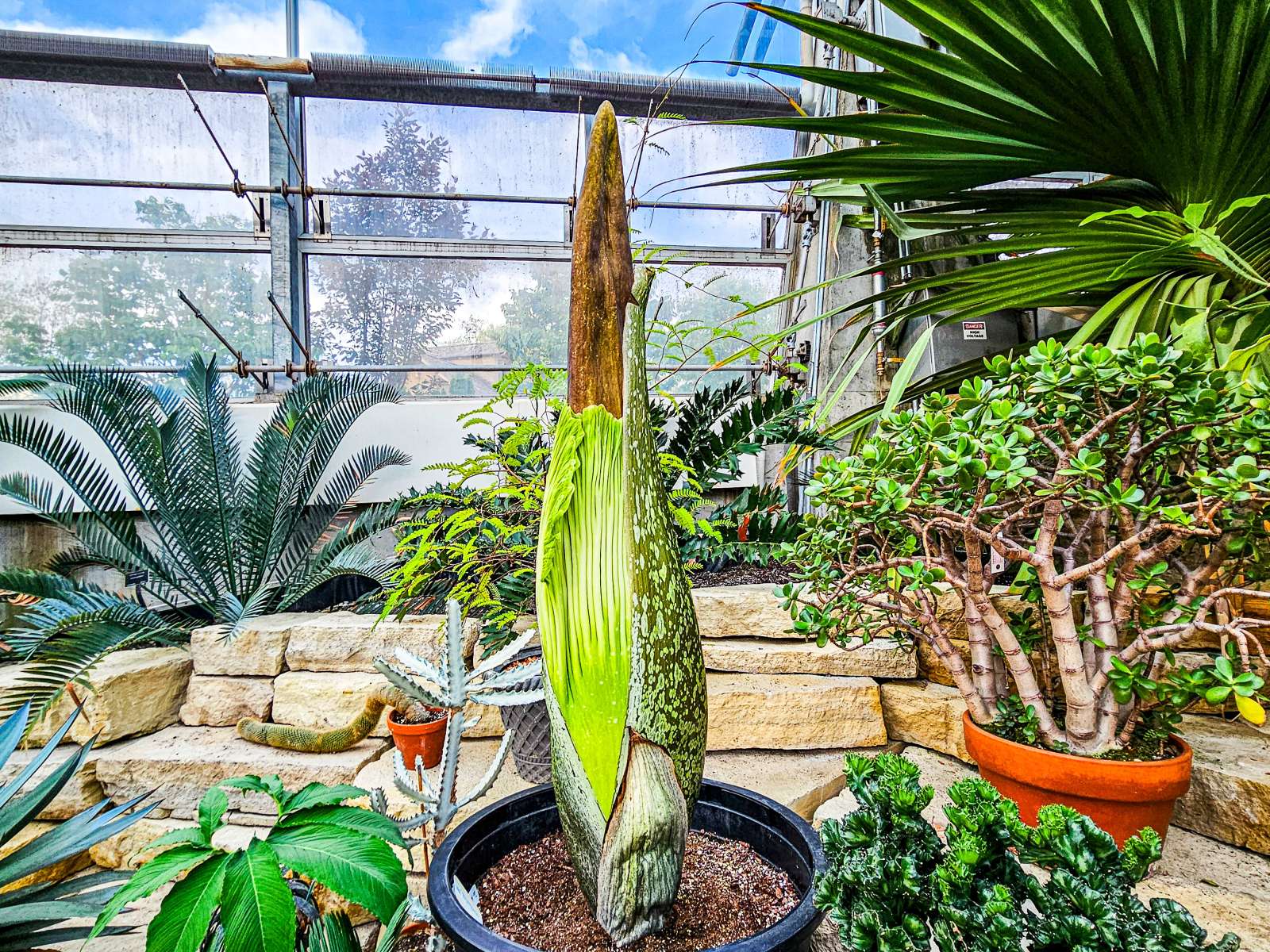Introducing Stink Floyd:
Rare. Rancid. Ridiculously Cool.

Origins
The corpse flower (Amorphophallus titanum) is an endangered plant. It originates from the rainforests on the Indonesian island of Sumatra. It is estimated that fewer than 200 plants remain in the wild. This specific corpse flower is on loan to us from Iowa State University's Bessey Greenhouse, under the care of Kenny McCabe.
Highlights
- Blooms up to 10 feet tall
- Rare blooming cycle: Blooms once every 7-10 years on average for the first bloom, then every 4-5 years following.
- It is estimated that fewer than 10 corpse plants bloom in the United States each year.
- Corpse plants live 30-40 years on average.
- Its bloom smells like rotting flesh. The bloom (and stench) last for only 24-48 hours. The odor can be detected up to one-tenth of a mile away when raised outdoors.
- For a life cycle of the corpse plant, click here.
What Makes it Smell?
The odor of the corpse plant is created by a scientific process known as thermogenesis. The bloom produces heat (upwards of 100 degrees), which creates a chemical reaction. The chemicals present in the smell are similar to those found in Limburger cheese, rotting fish, feces, and a decomposing body. The smell attracts pollinators like carrion beetles and flesh flies, which carry out the pollination process.
Why Does It Only Bloom Every 7-10 Years?
The corpse plant has a non-regular bloom cycle, unlike most other plants, making the bloom a rare and exciting event. The reason for its unpredictability is that the plant has to store up sufficient energy to shoot forth its tall spadix and bloom. Its energy is stored in the plant's tuber (base), which typically weighs about 100 pounds. It's kind of like a volcano--you never know when it will erupt.
How Did We Come Up With the Name?
We wanted something fun that would give the plant personality and character. Something that would help it stand out from the rest of the plant world--like a rock star. The bloom is nature's rock concert. It is loud in scent, rare in appearance, and draws a crowd. Since the plant sits on a "brick in the wall" in the Conservatory, we decided that a parody on Pink Floyd was the perfect pitch, and the name "Stink Floyd" was born.
Daily Measurements:
May 6: 47"
May 7: 51"
May 8: 55"
May 9: 59"
May 10: 62"
May 11: 66"
May 12: 69"
May 13: 72"
May 14: 74"
May 15: 76"
May 16: 77"
May 17: 78"